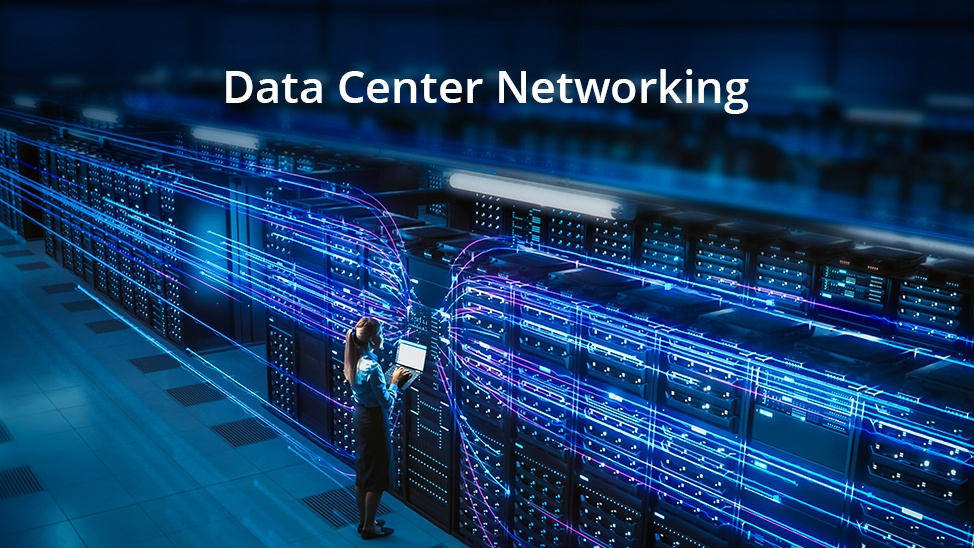Data center networking is the backbone of modern data center infrastructure management in today’s world, enabling seamless communication between servers, storage devices, and endpoints. In a world dominated by data-driven processes, efficient networking ensures operational excellence, scalability, and reliability.
This guide in Danacloud explores why data center in networking is critical, how it works, and what benefits it offers, providing an essential understanding for businesses and IT professionals alike.
Here’s a table summarizing the key aspects of data center networking based on the provided text:
| Aspect | Description | Benefits | Challenges Addressed | Types | Key Components | Trends in South Korea |
|---|---|---|---|---|---|---|
| Overall Importance | Enables communication between servers, storage, and endpoints; crucial for data-driven processes. | – Enhanced scalability<br>- Efficient resource allocation<br>- Improved connectivity<br>- Operational continuity | Managing vast data amounts, ensuring uninterrupted service, scaling operations globally. | – Enterprise Data Networks<br>- Cloud-Based Networks<br>- Carrier-Neutral Data Centers<br>- Edge Data Networks<br>- Hybrid Networking Solutions<br>- Software-Defined Networking (SDN) | – Switches and Routers<br>- Firewalls<br>- Cables and Fiber Optics<br>- Software-Defined Networking (SDN) | – 5G-Integrated Data Centers<br>- Green Data Centers<br>- AI-Driven Networking |
| How it Works | Integration of hardware and software to facilitate communication. | – Optimized data paths (reduced latency)<br>- Seamless scaling (vertical & horizontal)<br>- Multi-layered security (encryption, AI threat detection, firewalls) | – Latency and performance optimization<br>- Scalability for growing demands<br>- Advanced security measures | See above | See above | See above |
| Problems Solved | Addresses challenges of complex IT systems in the digital age. | – Cost efficiency (energy & server efficiency)<br>- Enhanced security (cyberattack protection)<br>- Reliability (minimal downtime) | – Latency and performance issues<br>- Difficulty scaling with growing workloads<br>- Increasing cyberattack risks | See above | See above | See above |
| Choosing the Right Network | Depends on organizational size, budget, performance needs, and security requirements. | Tailored solutions for specific needs. | Matching network type to business requirements. | See above | See above | See above |
| Benefits | Advantages of optimized data center networks. | See above under “Problems Solved” | See above under “Problems Solved” | See above | See above | See above |
| Best Solutions | Examples of leading networking solutions. | Advanced features and capabilities. | Meeting diverse networking needs. | N/A | – Cisco ACI<br>- Juniper Networks<br>- Huawei CloudFabric<br>- Local Korean providers | See above |
| Role of SDN | Simplifies data management by centralizing control. | – Centralized management<br>- Automation<br>- Faster service deployment | Managing complex IT landscapes. | See above | See above | See above |
| Cost Reduction | Strategies for minimizing operational expenses. | – Optimized cooling<br>- Renewable energy<br>- Intelligent load balancing | Reducing operational costs significantly. | N/A | N/A | See above |
Why Data Center Networking?
Have you ever wondered how businesses manage the vast amounts of data generated every second in today’s digital age? How do tech giants ensure uninterrupted access to services while scaling operations globally? The answer lies in efficient data center networking.
Data center networking is crucial for businesses that rely on robust IT systems to process, store, and retrieve data efficiently. In South Korea, the demand for cutting-edge data center solutions has surged due to the country’s growing adoption of AI, 5G, and cloud computing technologies. Data center networking supports:
- Enhanced Scalability: Allowing businesses to expand their operations without disrupting services.
- Efficient Resource Allocation: Optimizing server performance and reducing costs.
- Improved Connectivity: Ensuring uninterrupted access to critical applications and services.
Whether managing large-scale IT operations or supporting small businesses, data center networking is pivotal in maintaining operational continuity.
How Does Data Center Networking Work?
Data center networking involves the integration of hardware and software to facilitate smooth communication. Here’s how it functions:
- Data Flow Management: Traffic is routed between servers and external networks via routers and switches.
- Load Balancing: Ensures that traffic is evenly distributed to prevent server overload.
- Security Protocols: Firewalls and encryption protect sensitive data.
where data security compliance is stringent, modern data center networking also integrates advanced security solutions to meet local regulations.
If you want to know about data center tiers come here.
What Are the Components of a Data Center Network?
Data center networking relies on several key components to ensure efficient operation:
- Switches and Routers: Direct data traffic within the network and to external systems.
- Firewalls: Protect data from unauthorized access and cyber threats.
- Cables and Fiber Optics: Physically connect servers, storage units, and networking devices.
- Software-Defined Networking (SDN): Offers centralized control and greater flexibility.
Each component works together to create a secure and efficient environment for data processing and storage.
What Problems Does a Modern Data Center Network Solve?
In a digital era where businesses heavily depend on real-time data, modern data center networks are the backbone of operational efficiency. However, the complexity of IT systems introduces unique challenges. A well-implemented data center network doesn’t just address these issues—it transforms them into opportunities for growth and innovation.
-
Latency and Performance Optimization
Modern data center networks reduce latency by optimizing data paths and ensuring that data packets travel through the most efficient routes. Technologies like edge computing and software-defined networking (SDN) further enable faster data processing and improve responsiveness, making lag a thing of the past.
-
Scalability for Growing Demands
Traditional data centers often struggle to scale with increasing workloads. Modern networks incorporate flexible architectures that allow seamless scaling, whether it’s vertical (adding more resources to existing systems) or horizontal (adding more systems). This scalability ensures businesses can grow without overhauling their entire IT infrastructure, saving both time and costs.
-
Advanced Security Measures
With cyberattacks on the rise, data security has become a critical concern. Modern data center networks address this by integrating multi-layered security protocols, including:
-
- End-to-end encryption to secure data in transit.
- AI-driven threat detection to identify and neutralize vulnerabilities.
- Robust firewalls and intrusion prevention systems.
By mitigating risks proactively, these networks ensure business continuity and protect sensitive information.
Types of Data Center Networking
Data center networks are designed to cater to varying organizational needs and technological requirements. Here are the primary types:
Enterprise Data Networks
These are on-premises networks specifically designed for large-scale enterprises that prioritize control and security. Enterprise networks integrate tightly with the organization’s IT infrastructure, providing tailored solutions for handling sensitive data. They often incorporate robust security protocols and are ideal for industries such as finance, healthcare, and government.
Read more: What is an enterprise data center?
Cloud-Based Networks
Cloud networking enables businesses to access scalable, on-demand resources through virtualized infrastructure. This type is particularly popular for organizations with fluctuating workloads, as it offers flexibility and cost savings. Cloud networks also simplify global operations, enabling seamless collaboration across regions. Solutions like AWS, Microsoft Azure, and Google Cloud are leaders in this domain.
Read more: What is a Cloud Data Center?
Carrier-Neutral Data Centers
Carrier-neutral data centers provide flexibility by allowing businesses to choose their preferred network providers. These are popular in highly competitive markets due to their cost efficiency and adaptability. Carrier-neutral centers enable multi-tenant setups, making them a practical choice for hosting service providers, colocation facilities, and large enterprises.
Edge Data Networks
Edge computing has risen to prominence as organizations increasingly require real-time data processing. Edge data networks position computational resources closer to the source of data generation, minimizing latency and enhancing performance. This approach is particularly useful for IoT applications, autonomous vehicles, and remote monitoring systems.
Read more: What is an Edge Data Center?
Hybrid Networking Solutions
Hybrid networking combines the benefits of cloud-based and on-premises systems. Businesses can maintain sensitive operations on private infrastructure while leveraging the cloud for scalability and remote access. This type of network provides a balance between control, flexibility, and cost efficiency.
Software-Defined Networking (SDN)
SDN introduces programmability to traditional networking by separating the control and data planes. This technology enables centralized management, automation, and faster deployment of services. It’s particularly valuable for organizations seeking to optimize traffic flow and enhance operational agility.
Choosing the Right Network Type
The choice of a data center network depends on factors such as the size of the organization, budget constraints, performance needs, and security requirements. For example, enterprises prioritizing stringent security may prefer on-premises setups, while startups might lean toward cloud-based networks for their affordability and flexibility.
Data Center Networking Benefits
Implementing an optimized data center network offers numerous advantages:
- Cost Efficiency: Reduces operational expenses by improving energy usage and server efficiency.
- Enhanced Security: Provides multi-layered protection against cyberattacks.
- Reliability: Guarantees minimal downtime with robust failover systems.
South Korea’s businesses are increasingly leveraging these benefits to maintain a competitive edge in the global market.
Best Data Center Networking Solutions
- Cisco ACI: A software-defined networking solution that automates IT tasks.
- Juniper Networks: Known for its scalable and secure solutions.
- Huawei CloudFabric: Popular in Asia for its cost-effectiveness and performance.
local providers of Korea also play a vital role in delivering tailored networking solutions for businesses.
Data Center Networking Trends in South Korea
As a tech-forward nation, South Korea leads in adopting innovative trends, such as:
- 5G-Integrated Data Centers: Offering ultra-low latency for next-gen applications.
- Green Data Centers: Emphasizing energy efficiency to align with sustainability goals.
- AI-Driven Networking: Using AI for predictive maintenance and traffic management.
Data Center Networking FAQs
Q: What is the role of SDN in data center networking?
A: Software-Defined Networking simplifies data management by centralizing control, making it a preferred solution for South Korea’s complex IT landscapes.
Q: How do data centers reduce operational costs?
A: Modern data centers optimize cooling, leverage renewable energy, and use intelligent load balancing to cut costs significantly.
Q: Are green data centers popular in Korea?
A: Yes, many Korean businesses prioritize sustainable solutions, leading to the rise of green data centers with energy-efficient designs.
Q: What’s the future of data center networking in Korea?
A: The future focuses on AI integration, 5G deployment, and edge computing to support the country’s digital transformation.
Conclusion
Data center networking is vital for businesses aiming to thrive in an increasingly digital landscape. From enhanced security to operational efficiency, the benefits are clear. By adopting modern trends like 5G and AI, businesses in South Korea and beyond can future-proof their operations. With a focus on innovation and sustainability, the evolution of data center networking is set to redefine IT infrastructure globally.


